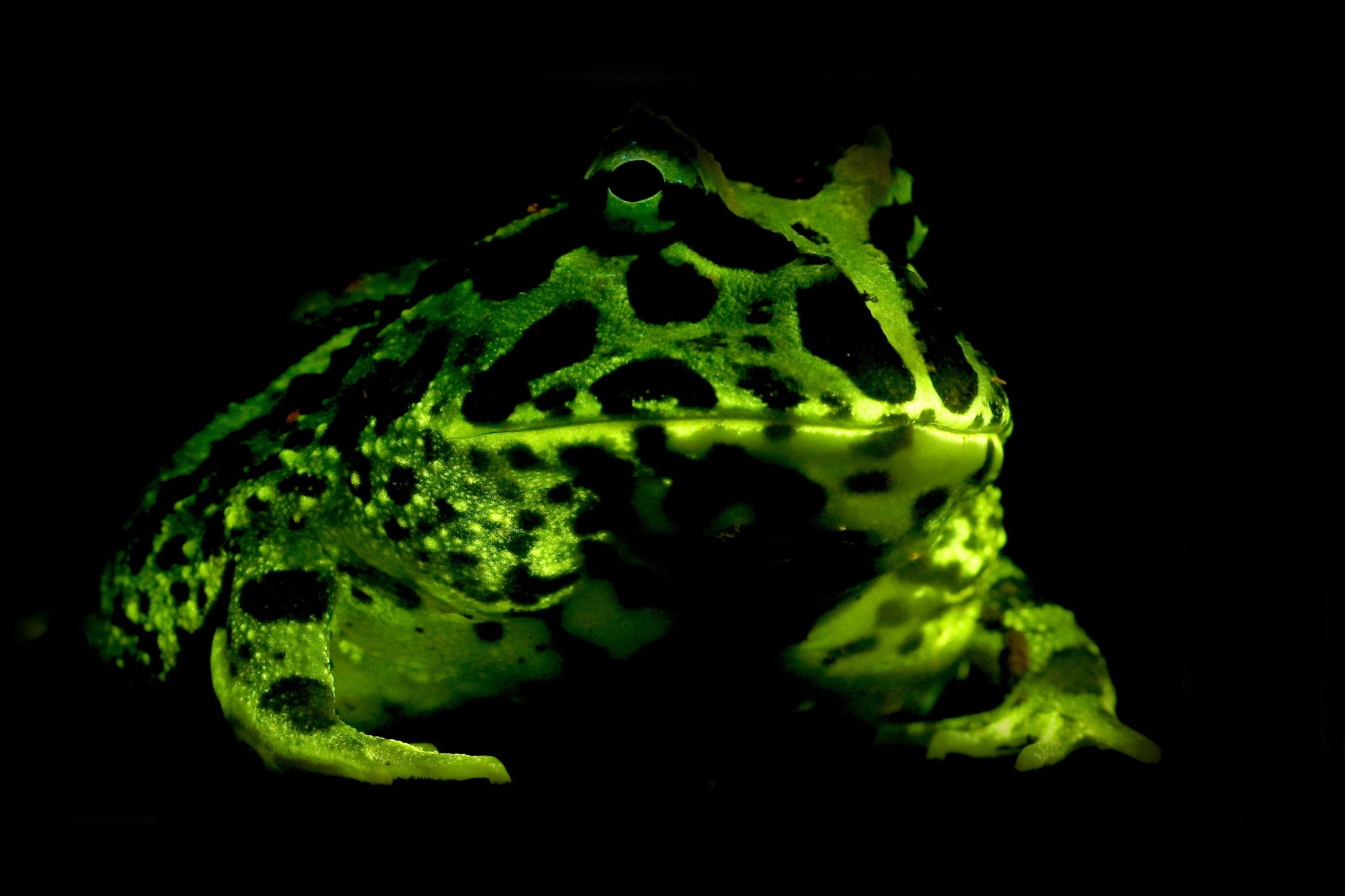Amphibians come in a wide range of colours, from the startling fire salamander to the many brilliant shades of dart frog, but scientists at St. Cloud State University have recently discovered a new spectrum of brilliance.
When under blue light, all of the 32 species tested glowed green or yellow in various patterns and intensities. Many land animals are known to fluoresce under ultraviolet light, including some amphibians, but it is mostly fully aquatic species, such as turtles and fish, which are fluorescent under blue light. This is because blue light is the wavelength which cuts through water most, but on land blue light is also prevalent after the sun sets which could explain why nocturnal amphibians expressed a particularly strong glow.
The reason for this glowing is unclear with theories ranging from camouflage to communication to reproduction. As members of all the major amphibian groups were tested (salamanders, frogs and caecilians), it is likely that this trait evolved before the separation of these groups and therefore could have no function at all in some modern lineages. Some species glowed brightly around the cloaca (the multi-function genital and disposal region) and there were some differences in display between males and females which suggests that the function of this fluorescence could be related to reproduction. Potentially the light could be used by females to detect certain males out of a cacophonous crowd of hundreds of calling suitors.
However, this glowing could be a strategy to avoid predation as the brightly coloured bellies which newts reveal as a warning to predators also glow under blue light. The question remains as to whether potential predators can see this light as, if they can, it could serve as an extra shock, giving the newt valuable seconds to escape.
Although clearly an interesting advance in our understanding of amphibians and animal communication, on the surface this study appears frivolous. On the contrary, as we know vegetation fluoresces red under blue light and amphibians bright green, this colour contrast could make locating amphibian species much easier under dim light conditions. As amphibians are known to be highly elusive and are often nocturnal, this ease of detection will be essential for conservation efforts. As 41% of amphibian species are estimated to be threatened with extinction by the IUCN Red List and deadly chytrid fungus spreading across the world, glowing frogs may be just the discovery conservation needed.
image source: Jennifer Lamb & Matthew Davis, St Cloud State University

